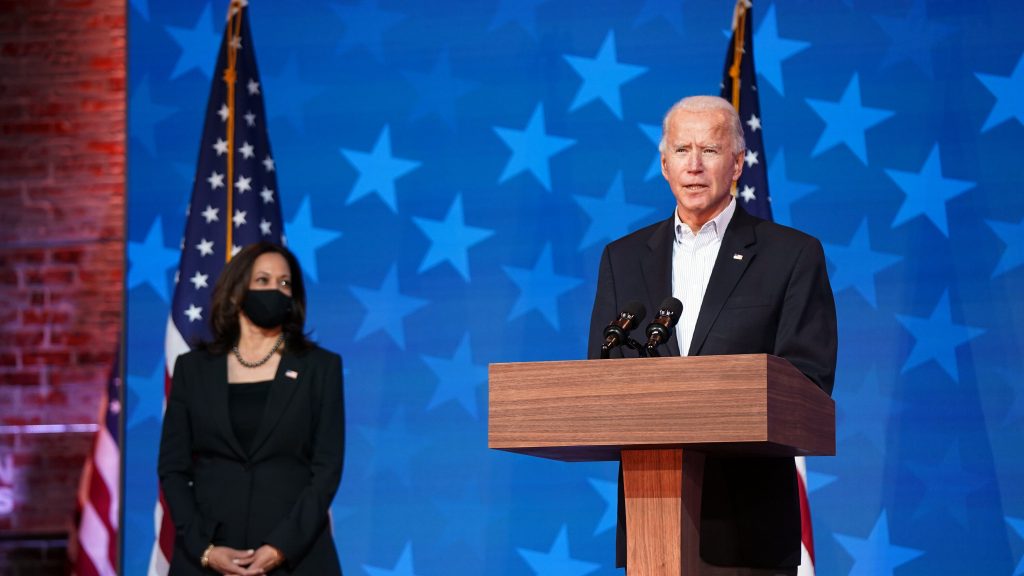Dr. Seema Javed
 The Senate passed a historic first-ever US climate bill that puts the US on a path to achieve 2/3 of its 2030 NDC. It’s not perfect, but it’s pretty darn great and a much needed boost heading into climate diplomacy season and US midterm elections. The House vote and Biden’s signature will happen as soon as this week (both pretty guaranteed), so we should treat this as a done deal.
The Senate passed a historic first-ever US climate bill that puts the US on a path to achieve 2/3 of its 2030 NDC. It’s not perfect, but it’s pretty darn great and a much needed boost heading into climate diplomacy season and US midterm elections. The House vote and Biden’s signature will happen as soon as this week (both pretty guaranteed), so we should treat this as a done deal.
To fight climate change and inflationary fossil fuels, the U.S. Senate has passed major legislation supporting the clean energy transition. The bill will direct $369B toward clean energy and put the U.S. economy on track to cut emissions 40% or more by 2030. This would be the largest U.S. climate investment in history, and it comes at a time when American families are suffering from climate impacts and high fossil fuel energy bills.

The bill will enable President Biden to head into COP27 with stronger authority to encourage action from other major emitters. It also will be a boon to the clean energy economy at home and around the world. It could create 9 million good jobs in the U.S. over the next decade. Clean energy stocks soared once it was announced that key U.S. Senators had reached agreement on the Act.
The bill is likely be voted on in the House this week, where Democrats have a strong majority, and will shortly thereafter be signed into law by President Biden.
The Senate has voted in support of the Inflation Reduction Act of 2022, paving the way for the U.S. to pass the largest climate investment in its history with $369 billion for clean energy. It’s expected to be voted on by the House (where Democrats have a strong majority) around 12 August and would shortly after be signed into law by President Biden.
Emissions: The bill, combined with other federal and state legislation already in place, would put the U.S. on track to cut domestic greenhouse gas emissions 41-44% by 2030 (see analyses from Rhodium, Energy Innovation, and Princeton). Without Congressional legislation, the U.S. was on track for only 25-34% emissions reductions. The new figure still falls short of the 50-52% emissions reduction target under the Paris Agreement that the U.S. pledged in 2021, but more action by Biden’s executive branch and business and local leaders can help close that gap.
Clean energy: The bill will cut U.S. carbon emissions by accelerating the deployment of clean energy and electric vehicles. After passage, it could increase annual utility-scale solar installations to 49 GW per year and wind installations to 39 GW per year, on average between 2024-2026, compared with installations of 10 GW and 15GW in 2020, respectively.
Environmental justice: The bill contains $60B to advance environmental justice in disadvantaged communities. However, early analysis suggests that these investments fall short of the Biden Administration’s climate justice commitments and promise to invest 40% of federal funds for climate and clean energy in communities that have historically been overburdened by pollution. The Justice40 Initiative could be applied to further aspects of U.S. climate funding, but is heavily dependent on state implementation.
Fossil fuel lifeline: The “all of the above” inflation and energy security legislation includes support for nuclear and prioritizes fossil fuel leasing on public lands. It also provides subsidies for fossil fuel and industrial plants to add equipment to limit carbon pollution (carbon capture and storage or CCS) and tax credits to support green hydrogen. There are concerns from environmental groups that CCS support could extend a lifeline to the fossil fuel industry or be used to support more dirty hydrogen projects.
Green jobs: A new analysis finds that the Act will create more than 9 million good jobs over the next decade and help sustain the millions of jobs already existing in the U.S.’s clean economy.
Affordable energy: Economists find that investing in renewables and accelerating the clean energy transition is a strong pathway to fighting inflation and strengthening the economy. Increased energy prices accounted for almost half of the increase in inflation in June. The bill will also make energy cheaper, cutting energy costs by nearly $50B in 2030 by lowering use of fossil fuels. In the near-term, this investment means Americans will pay less for power bills, and it also contains subsidies to help homeowners transition away from oil and gas, allowing for additional savings.
Clean transport: The bill would extend a $4,000 tax credit for lower- and middle-income Americans to buy used clean vehicles, and up to $7,500 to buy new clean vehicles. But the full EV tax credits are tied to cars made with a certain percentage of minerals mined or processed in nations with U.S. free trade agreements, or recycled in North America – a supply chain that is currently lacking. The focus is on personal, heavy-duty, and commercial vehicles, though last year’s Infrastructure Act invested ~$100B for public transit.
Advancing clean tech: The bill contains over $27B for research and development in clean technology, which could have knock-on effects for strengthening the global clean energy economy and making renewable technology more affordable.
Methane: The bill includes a fee placed on methane emissions from the fossil fuel industry, which could cost some operators up to $1,500 a ton within the next five years.
The Key elements of the Inflation Reduction Act of 2022 include:
- Tens of billions to decarbonize the economy through tax credits for clean electricity and energy storage
- $250 billion in new loan authority for energy projects
- $60B to decarbonize American manufacturing for industries like steel, cement, and aluminum
- A methane fee on the oil and gas industry for the pollution during extraction
- $60B to advance environmental justice in disadvantaged communities
- EV tax credits – a $4,000 tax credit for lower- and middle-income Americans to buy used clean vehicles, and up to $7,500 to buy new clean vehicles
- $9B in rebates for consumers to purchase electric appliances
- Over $20B for forest conservation and stewardship and climate-smart agriculture
The bill will put the U.S. on track to cut up to 44% of emissions by 2030 (from a 2005 baseline), an increase from the projection of only 25-34% emissions reductions without this legislation. This falls short of the 50-52% emissions reduction target the U.S. pledged in 2021, but more action by Biden’s executive branch and business and local leaders can help close that gap.
 Jubilee Post News & Views
Jubilee Post News & Views





